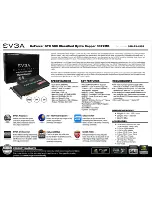
PCI 1 Port RS422/485
Hardware Setup
Chapter 2 Page 11
General PCI RS422/485 Serial Port Features
Clock Input:
14.7456MHz
Drivers:
SN75174
High Level Voltage: 3.7V typical at 33mA source
Low Level Voltage:
1.1V typical at 33mA source
High Level Current: -60mA max.
Low Level Current:
60mA max.
Receivers:
SN75175.
Difftial I/P threshold: 200mV max.
Hysteresis:
50mVolt typical.
Input Impedance:
>12K Ohm without terminators.
Autogating.
Multitasking operating systems, like Windows 95, Windows
NT, OS/2 and UNIX, cannot successfully use the RTS line to control
the gating of the PC’s transmitter. Whilst they can set the RTS line
true just before the data transmission starts, they cannot set the RTS
line false quickly enough after the data has gone. This is due to the
time slicing mechanism used by these multitasking operating
systems. The interrupt service routines in multitasking OS’s have a
long latency, i.e. time taken to switch context from the foreground
program to the interrupt routine. During this time, the first few bytes
of the external devices reply to the PC may be lost since the serial
port transmitter is still gated onto the twisted pair cable.
To overcome this problem, Autogating hardware has been
added to the to the RS422/485 card. This automatically detects the
start of the PC’s data transmissions, and gates the PC’s transmitter
onto the twisted pair cable. It then automatically detects the last stop
bit being sent and gates the port off the twisted pair cable. An added
bonus of RS485 AUTOGATING is that special device drivers no
longer need to be written to use RS485 in any operating system. To
all intents and purposes, it looks just like an ordinary RS232 COM
port to the host PC. Autogating for half duplex operation is a
necessity for Windows 95, NT and the forthcoming Windows 98
(Memphis) and Windows NT 5.












































